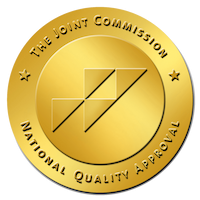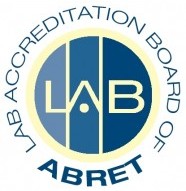Neurology center in Augusta, Georgia
The neurodiagnostic department at Doctors Hospital of Augusta offers dedicated care for many types of neurological problems. We provide complete stroke care, from fast diagnoses in the emergency room (ER) all the way through stroke rehabilitation.
Additionally, we have an on-site electroencephalogram (EEG) laboratory, where our neurologists monitor brain wave activity to diagnose a variety of conditions, including seizures and epilepsy.
To learn more about our neurological services, please call us at (706) 651-6524.
Recognition


Doctors Hospital of Augusta has received advanced certification from The Joint Commission as a Primary Stroke Center. Additionally, our electroencephalogram (EEG) laboratory is accredited by the Laboratory Accreditation Board of ABRET.
Advanced stroke treatment
The ER at our hospital offers prompt, comprehensive emergency care when a patient arrives with stroke symptoms. We work quickly to confirm a diagnosis and begin treatment as soon as possible. For patients with ischemic strokes arriving within a certain time frame after the onset of symptoms, we use tissue plasminogen activator (tPA), a clot-busting drug, to restore blood flow.
An ischemic stroke occurs when there is a blockage in blood flow to the brain. This normally occurs due to a buildup of plaque in one of the arteries. We treat ischemic strokes by locating the blockage and using clot-busting medications or a procedure to widen the artery.
A hemorrhagic stroke occurs when blood begins bleeding into the brain. This occurs due to a burst blood vessel in the brain. Hemorrhagic strokes are the less common type of stroke. They are treated by relieving the excess pressure put on the brain.
Know the signs of a stroke
Being able to recognize stroke symptoms could save a life. Familiarize yourself with the stroke symptoms listed below so you know when to seek emergency care. Every second counts when diagnosing and treating a stroke, so recognizing symptoms and getting to the hospital fast are crucial.
If you suspect a stroke is occurring, remember to act F.A.S.T.:
- F(ace): Does one side of the face feel numb? Does one side of the face droop when smiling?
- A(rms): Does one arm feel weak or numb? Ask the person to raise both arms over their head. Does one arm drift downward?
- S(peech): Can you easily understand them when speaking? Are they slurring their speech? Can they repeat a simple sentence correctly?
- T(ime): If you identify one or more of these symptoms, a stroke may be occurring. Call 911 immediately.
Stroke rehabilitation
A stroke often results in cognitive and/or neurological problems due to the brain's prolonged loss of oxygen. Side effects of stroke vary from patient to patient depending on the severity of the blockage and the time to treatment. Our hospital's comprehensive physical therapy and rehabilitation program offers specialized care for patients recovering from a stroke.
Patients may participate in stroke rehabilitation on both an inpatient and outpatient basis as they continue along the recovery path. Stroke rehabilitation often focuses on restoring fine motor skills and speech problems that may be affected by a stroke. Our patients work with physical, occupational and speech therapists to:
- Relearn daily activities, such as dressing and bathing
- Restore fine motor skills
- Work through speech deficits
Stroke care team
Patients receiving treatment for a stroke at our hospital are cared for by a multidisciplinary team of healthcare professionals, including:
- Case managers
- Dietitians
- Emergency physicians
- Neurologists
- Neuroradiologists
- Neurosurgeons
- Pharmacists
- Rehabilitation therapists
- Registered nurses
Neurological imaging services
As part of our advanced imaging services, our neurodiagnostic department operates its own electroencephalogram (EEG) laboratory. Staffed by registered EEG technologists, our team goes the extra mile to ensure every patient is informed about their care and remains comfortable during testing.
An EEG is a test that measures and records electrical activity in the brain. Special sensors, called electrodes, are placed on the head and attached to wires that communicate with our computer system. The computer will record brain wave activity on the screen.
EEGs are performed for many reasons, such as:
- Checking for problems that could cause loss of consciousness or dementia
- Determining a patient's recovery status following a change in consciousness
- Diagnosing epilepsy and identifying what type of seizures are occurring
- Diagnosing mental health problems or physical problems in the brain, spinal cord or nervous system
- Monitoring brain wave activity during brain surgery while under general anesthesia
The EEG lab is located within the hospital in our main tower on the first floor. For questions about an EEG exam, please call us at (706) 651-6524.
What to know before you go
An EEG requires patients to remain still and quiet for about an hour and a half. In preparation for the test, we ask that patients:
- Do not plan other commitments around the exam time
- Do not use hair products such as hair spray, mousse or gel
- Dress comfortably on the day of the test
- Eat before the test (no eating or drinking during the test is allowed)
- Wash your hair the night before the test for easier removal of electrodes
An EEG is a diagnostic test that does not hurt or give off electric shocks. It is not a treatment or cure for neurological conditions.
What to expect on the day of your EEG
On the day of your exam, one of our technicians will lead you into a small room. This room is set up as a relaxing space. Your technician will be happy to answer any questions you have before your exam.
You will be asked to lie down on a bed. The technician will measure your head with a soft tape measure to mark where the electrodes will be placed. The electrodes will be applied on your scalp using a small amount of paste. This paste will prevent the natural oils from your hair from interfering with the exam. Once the electrodes are in place, we will ask you to lie back and relax.
When the exam begins, the lights in the room will be dimmed. The technician will be at the controls of the EEG machine conducting the exam. All you have to do is relax and try to sleep. We will do a series of breathing exercises. Then you will relax for a while longer. At this time, you will see blinking lights.
The technician may ask you to answer questions during the exam to record your brain waves. Your ability to answer questions is part of the testing process.
After the test is finished, the electrodes will be removed. Your head will be cleaned with a wet cloth to remove the paste. A comb will be provided for grooming afterwards. You will need to shampoo your hair when you return home.
Treatment for seizures
A seizure is a storm of electrical activity occurring on the surface of the brain. This results from abnormal electrical signals that cause a chain reaction throughout the brain. Epilepsy is a type of seizure disorder that occurs because electrical impulses in the brain are not working as they should. Seizures associated with epilepsy can be confined to one area of the brain or spread to other areas. Epilepsy may occur at any point in life. However, onset is much less common after adolescence.
Our neurologists and imaging technicians offer specialty care for patients experiencing seizures and make epilepsy diagnoses in our state-of-the-art EEG laboratory. The main treatment options for seizures are anticonvulsant or anti-epileptic medications. The goal of these medicines is to prevent seizures from occurring with minimal side effects.
What to do if your child has a seizure
Although seizures can be alarming to witness, most seizures are not considered medical emergencies and can be allowed to run their course. It’s normal for your child to turn pale or bluish during a generalized seizure.
While there is no way to shorten a seizure, several things can be done to reduce its impact on your child:
- Loosen all tight clothing, especially around the neck
- Move sharp, hot or hard objects out of the way
- Time every seizure by the clock and note the duration
- Turn your child on their side and wipe away the saliva from their mouth
When your child is experiencing a seizure, it is important NOT to:
- Restrain your child’s movements in any way
- Insert objects into your child’s mouth
- Try to force the mouth open if it is tightly closed
- Try to give medication or any other substance by mouth during the seizure
Avoiding seizures in children
The majority of seizures have no known cause. However, many factors can lead to a seizure, especially in children with a history of seizures. To reduce a child's seizure threshold (the point where the brain will go into seizure), you can avoid improper use of prescribed medications. Other factors, such as menstrual periods and illnesses (especially those causing fever, emotional stress, lack of sleep and fatigue), may also contribute to seizures.
